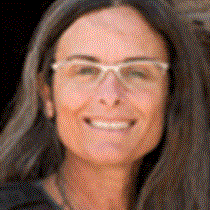Freshwater Bay & Pavlov Harbor, Chichigof Island
You know it’s going to be an incredible day when the ship chooses to turn away from killer whales.
This morning we were exploring Freshwater Bay, a long inlet on Chichagof Island. After breakfast, just as we were about to begin our shipboard briefings, an announcement came from the bow, “killer whales to starboard!” Everyone rushed up to the decks where blows and tall dorsal fins could be spotted close to shore. But to port something equally exciting was noticed, a group of bubblenet feeding humpback whales surging to the surface. Quickly the hydrophone was deployed to listen for the tell-tale high-frequency sounds these whales make as they corral their prey. With their jaws gaping they burst to the surface, throat pleats expanding full of water and herring. They use their baleen plates like a sieve, pushing the water out and keeping the fish in. This unusual communal feeding behavior has been documented in only about 50-60 individual whales in this region. Photographers delighted as this behavior was observed at close distances and repeated over and over for nearly two hours.
We continued on our way across the bay to drop anchor at Pavlov Harbor where we explored by kayak, on foot, and by Zodiac. Onshore around the edges of a stream emptying into the bay there were plenty of bear tracks and the tattered remains of recently scavenged salmon.
Late in the afternoon we had our first presentation on photography, but were interrupted by more humpback whales and a brown bear on the beach. We stayed with the whales until the individual animals began to move off from the group, and blows could be seen off into the distance.
What a fantastic first day for our expedition.
You know it’s going to be an incredible day when the ship chooses to turn away from killer whales.
This morning we were exploring Freshwater Bay, a long inlet on Chichagof Island. After breakfast, just as we were about to begin our shipboard briefings, an announcement came from the bow, “killer whales to starboard!” Everyone rushed up to the decks where blows and tall dorsal fins could be spotted close to shore. But to port something equally exciting was noticed, a group of bubblenet feeding humpback whales surging to the surface. Quickly the hydrophone was deployed to listen for the tell-tale high-frequency sounds these whales make as they corral their prey. With their jaws gaping they burst to the surface, throat pleats expanding full of water and herring. They use their baleen plates like a sieve, pushing the water out and keeping the fish in. This unusual communal feeding behavior has been documented in only about 50-60 individual whales in this region. Photographers delighted as this behavior was observed at close distances and repeated over and over for nearly two hours.
We continued on our way across the bay to drop anchor at Pavlov Harbor where we explored by kayak, on foot, and by Zodiac. Onshore around the edges of a stream emptying into the bay there were plenty of bear tracks and the tattered remains of recently scavenged salmon.
Late in the afternoon we had our first presentation on photography, but were interrupted by more humpback whales and a brown bear on the beach. We stayed with the whales until the individual animals began to move off from the group, and blows could be seen off into the distance.
What a fantastic first day for our expedition.




